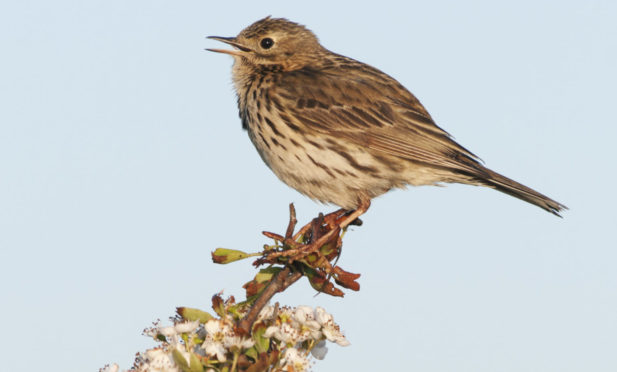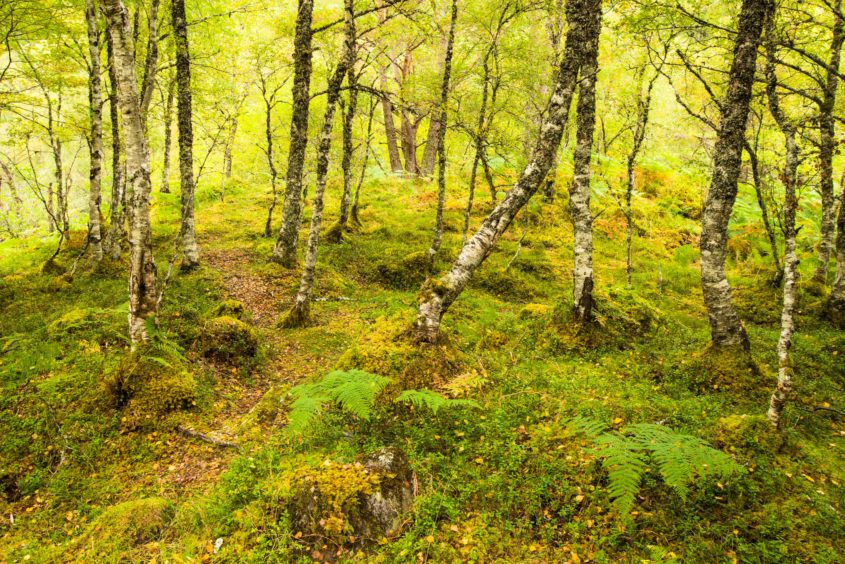
The green dream of rewilding Scotland’s landscape may risk some of Scotland’s rarest birds, a study has found.
Hopes of covering glens and moors in native trees could trigger a decline in numbers for endangered species.
Currently almost a fifth of Scotland is woodland and this is set to increase by up to 35,000 acres per year, under Scottish Government plans.
But a study in the Perthshire Highlands, led by the RSPB, warns the programme may risk 3,000 meadow pipits annually, with other songbirds badly affected.
And the drop in the moorland dwellers will also hit raptors, such as the merlin falcon, who prey on them, and cuckoos, whose eggs are unknowingly hosted by meadow pipits.
But there will be benefits as more birch, larch and native pine are planted, with willow warbler numbers growing.
Yesterday a spokesman for the RSPB said: “We are supportive of woodland expansion but it needs to be the right tree in the right place for the right purpose.
“As a minimum, we want to see a more strategic approach taken to the question of where to plant trees, identifying areas where trees are not desirable because such areas are already of high nature value, such as peatlands, open grasslands used by waders etc, and areas where it would be desirable.
“Some work is already under way to help do this.
“When it comes to land use, forestry isn’t the only consideration. Land is also needed for farming, nature conservation (such as habitat restoration), amenity and recreation, housing and renewables. So, ultimately, we think there needs to be a more strategic approach to land use, to consider things in the round.”
The Scottish Government has set a target for future woodland expansion to cover 21% of Scotland by 2032. This would mean planting up to an extra 35,000 acres a year.
The study, published in the journal Biological Conservation, looked at the breeding bird communities in native woodland plantations and nearby open moorland, covering 172,000 acres of Perthshire.
Overall, more bird species were present in native woodland plantations than on moorland, and the number of species increased with the age, height and cover of the woodland present.
Many songbird species were also more common in woodland than on moorland, but the meadow pipit, listed as “a near threatened species” by the International Union For The Conservation Of Nature, would lose out.
Just two years of native woodland creation would result in the loss of more than 6,000 meadow pipits in Scotland, it was predicted.
The report said the bird was “a crucial species, being a major prey item of threatened raptor species such as hen harrier and merlin, and a numerically important host species for the declining common cuckoo.”
But there could be benefits from rewilding for species such as the willow warbler, which is also at risk.
This study concludes: “Replacement of long-established open ground through woodland expansion could have far-reaching implications for upland food webs through reduction in prey and host abundance, with negative effects for open-ground bird species.”
Yesterday a Scottish Forestry spokesperson said: “We welcome the paper’s findings that appropriate planting can help increase habitats for woodland birds.
“Scotland’s Forestry Strategy was developed with a wide range of land management interests.
“Woodland creation proposals are sensitive to the surrounding environments including the species of wildlife in the vicinity.
“Working with this philosophy helped ensure that in 2018/19, as part of the overall 11,210 hectares of new woodland created in Scotland, 4,436 was native woodland.
“Our aim is to integrate forestry with other land uses and enhance natural capital including wildlife, whilst also providing economic and social benefits.”

Enjoy the convenience of having The Sunday Post delivered as a digital ePaper straight to your smartphone, tablet or computer.
Subscribe for only £5.49 a month and enjoy all the benefits of the printed paper as a digital replica.
Subscribe © Christoph Ruisz/imageBROKER/Shutterstock
© Christoph Ruisz/imageBROKER/Shutterstock